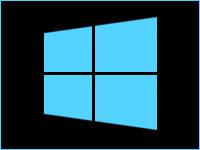
Executives tasked with deciding which technologies their companies should buy said a year ago that they didn’t think Windows 8 would work for them. Consumers didn’t like it either. It doesn’t appear that any of them have changed their minds. The vast majority of companies and consumers are staying as far away from Windows 8 as they can. It is too different and confusing in their view. So what’s going to happen next? Can Nokia help?
Many companies actually would have preferred to stay with Windows XP, but Microsoft did not give them that option. It put an expiration date on XP, forcing users to upgrade. The choice is whether to upgrade to the more familiar Windows 7 or the new and completely different Windows 8?
Some will choose Windows 8; however, the vast majority will go to Windows 7. That means the Windows 8 path that Microsoft wants to lead everyone down is just not agreeable. Will that matter to Microsoft? Of course it should — but based on their past behavior, who really knows?
Microsoft will be changing CEOs soon. Will the new CEO head down the Windows 8 path? If so, Microsoft will have to pay a steep price.
I think Microsoft should focus on both Windows 7 and 8 and let customers choose which OS they want. To many, Windows 8 is too far out there. Customers can still get 7, but it’s much more difficult to find. It should be as easy as clicking an icon.
Nokia will soon be acquired by Microsoft. Will that help? It depends on the direction the new CEO wants to take.
Worlds Apart
The real problem here is that Microsoft and its customers are not on the same page. Microsoft wants to change and grow, so it figured the best way would be to totally reinvent its operating system and tie it in with its tablets and smartphones. However, customers don’t want to have to go through another learning curve.
Average users have no interest in investing time and aggravation in trying to understand the new Windows 8 operating system. They are just fine with Windows 7.
These customers, whether business or consumers, have their own lives to live and businesses to run. They don’t have the time to spend getting warmed up to a new operating system. This would benefit Microsoft — but it does not the company’s customers.
There’s the rub, Microsoft! You are not thinking about your customers — only yourself.
It is up to Microsoft to develop something its customers really want — something that will offer new features and functionality; something that will work with computers, tablets and smartphones; most importantly, something they can use without any help.
In fact, Microsoft should develop a new front end that makes Windows 8 work like Windows 7. That would be a perfect solution. Let the customer choose which way they want to use the OS. It would solve the problem altogether.
So why the hell doesn’t Microsoft just do that?
Consumers are confused by Windows 8. Business customers are responsible for training their workers and keeping them operational. That means their support people will be overloaded. They see Windows 8 as a train wreck.
Companies have a business to run, and consumers have a life to live. Tthey wonder how Microsoft has the nerve to put them out like this, once again — especially when today there is serious competition trying to win Microsoft customers. Companies like Google, Apple, and many others have Microsoft in their sights.
Message to Microsoft
So, message to Microsoft: Wake up and listen to your customers before it’s too late. Give them what they want. Sure, you can create a new operating system if you want to. However, don’t force existing and otherwise happy customers into the uncomfortable space of having to learn a completely new and different OS.
You’ve done a great job over the last few decades. Customers are used to Microsoft operating systems. Most customers have no desire to change. It’s part of the brand relationship with users.
So Microsoft, it’s up to you to make each change transparent — to take care of your customers; to keep the value of your brand strong. Otherwise, your customers will have no reason to stay put.
Forcing Windows 8 down everyone’s throat will hurt the Microsoft brand, and Nokia smartphones and tablets won’t solve this problem.
The Windows 8.1 fix doesn’t make it any better. For the few customers who like Windows 8, 8.1 makes it a little easier to use. However, for those who don’t like Windows 8, there’s no improvement. Most customers are not used to and simply don’t like tiles. It’s not the brand relationship they have with Microsoft.
It’s time for a Coca-Cola New Coke re-do. Admit you screwed up and give customers what they really want. That’s the only real solution. That will make customers much closer with you on an emotional level.
At the very least, let users choose whether they want to use Windows 7 or 8. If you force them into the Windows 8 box, it will be a very big mistake and could cause significant customer loss.
At the very, very least, put a front end on Windows 8 that works like Windows 7 to keep your customers happy.













































With more than 1.1 billion touch computers sold in 2013, your advice is a death wish for Microsoft. They must have a touch capable OS.
MS customers are not forced to take Windows 8. Windows 7 is still an option and customers can also buy the downgrade option.
Customers who want to stay with 12 year old operating systems are the death of developers. Microsoft provides free security updates and people want to live in the past.